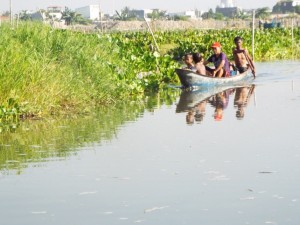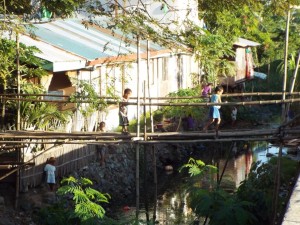Hope for a Better Future
Blog by Becky Murphy: Learning & Capacity Building Officer at Christian Aid and Lead LPRR Researcher at Kings College London University
“Sometimes a disaster can be an opportunity. A shock forces you to stop, step back, reflect and see all that needed to change and all that needed to be improved”
(Field Officer).
An Opportunity
Academics, practitioners and policy makers alike have discussed the opportunity and the transformational ‘space’ that a disaster can create. Individuals, communities, organisations and governments are forced to stop and reflect and therefore given the opportunity to transform.
The START DEPP Linking Preparedness Response and Resilience in Emergency Contexts (LPRR) project recognises the opportunity that the humanitarian sector has to tackle underlying vulnerabilities, inequality and marginalisation.
It recognises the opportunity that organisations have to build community resilience before, during and after a disaster. It understands that a disaster creates a short period of time, a small ‘space’ where risk awareness is high, where communities can be built back better and governments can be more open to be influenced for improved legislation development and implementation.
LPRR
With the hope of figuring out a strategic, practical method of utilising this opportunity and improving practice, the LPRR project will be exploring 8 past humanitarian interventions and mapping out the relationship that they had with resilience building. These case studies aim to develop a set of practical actions that can be done before, during and after a humanitarian response.
The Journey Begins
We began this journey in the Philippines exploring the consortia’s response to typhoon Ketsana in 2009 and typhoon Haiyan in 2013. Here, the first set of messages, lessons learnt and recommendations were developed.
LPRR asked the community and in country field staff what they think, what resilience means to them, how they feel the intervention could have been improved, what worked, what failed and how community resilience was (or could have been) strengthened.
A Purpose
It was clear that a core message coming out of the Philippines was that the community* want to be involved from the offset. The community want to have a purpose and agency and not be perceived as powerless victims dependent on aid.
Underlying Vulnerabilities
It was understood that resilience means different things to different communities and is very dependent upon the context and underlying vulnerabilities. Ultimately both communities wanted the resources and knowledge to look after themselves and be well connected and know where and how to ask for help and support.
Hope
“We lost our hope when Yolanda hit” Community Member
A number of core challenges were mapped out. Not only were the programmatic challenges explored but the team also a set of deeper and more complex limitations. For example the loss of hope caused by the trauma of the disaster has been identified as a profound issue significantly limiting community’s ability to cope, adapt and transform their lives and livelihoods.
“Resilience cannot be built if people have lost hope for a better future; in order to thrive we need a vision of a better future to work towards” (In country emergency response field officer).
The main challenges included:
1. Root causes of vulnerability
2. In-experienced local partners
3. Lack of technical expertise
4. Donor restrictions
5. Lack of human resources and capacity
6. Lack of inclusive approaches by local government
7. High staff turnover and deskilling of local organisations
8. Lack of understanding of the local market
9. Trauma and community loss of hope
10. Lack of clear communication with community
11. Trade-offs and decision making
12. Lack of emergency infrastructure
Recommendations
Local partners are working on development interventions in disaster risk zones field staff (including international, in country and local partner response officers) and community members recommend incorporating the following actions;
1. Data Collection & Management.
2. Train Local Partners in Emergency Response.
3. Train community members on emergency response.
4. Build Trust.
5. Promote community and household saving schemes.
6. Understand the local market and economy.
7. Ensure development incorporates emergency preparedness.
Immediate Emergency Response Phase:
1. Conduct immediate trauma debriefs for community survivors and field staff.
2. Use cash for work interventions to empower communities.
3. Advocate for underlying root causes of vulnerability to be tackled.
4. Share timelines & have clear communication with the community.
5. Ensure community engagement.
6. Align efforts and collaborate through one organisation.
7. Allocate a small proportion of the budget for flexible funding.
Recovery & Rehabilitation Phase:
1. Prioritise psycho-social support, address trauma, anxiety, depression and loss of hope.
2. Continue with cash for work schemes but also introduce loan schemes
3. Help the community create a vision. Participation here is crucial.
4. Draw on local and national thematic experts for support.
5. Move beyond acknowledging underlying vulnerabilities and take action to address them.
6. Create spaces and places for learning and capacity building.
Next…
LPRR will be heading out to Kenya to explore a food security intervention in Nairobi. For more information please contact Becky Murphy the LPRR Resilience Learning and Capacity Building Officer and Lead Researcher at rmurphy@christian-aid.org. At the end of the case studies, the consortia will work together to figure out practical ways to put the recommendations into action.
* This project recognises the term ‘community’ as a collective group of at risk, exposed residents.
Images: Philippines Community Members in Metro Manila and Ormoc ©Rebecca Murphy

